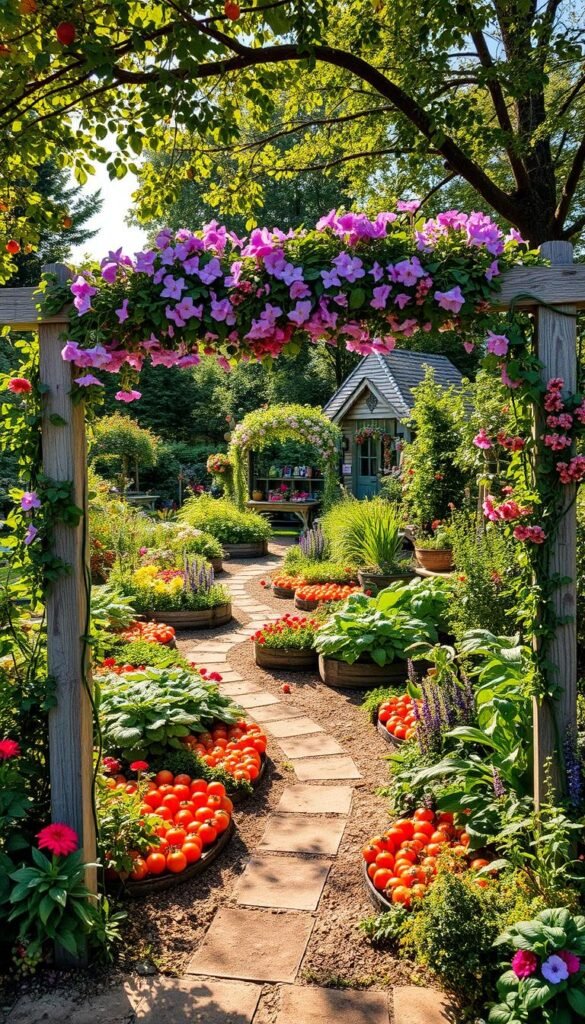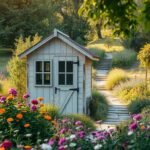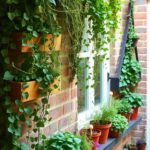Imagine stepping outside to a vibrant sanctuary where juicy tomatoes mingle with cheerful marigolds, and fragrant herbs brush against fluttering butterfly wings. This isn’t just a fantasy – it’s the magic of blending edible and ornamental plants in one cohesive garden design.
By pairing vegetables with flowers, you create a living tapestry that feeds both body and soul. Pollinators like swallowtail butterflies become frequent visitors, boosting yields for crops like zucchini that rely on their pollination services. Even small areas flourish – consider trying compact vegetables for small spaces alongside trailing nasturtiums.
Here’s the secret: every bloom works overtime. Sunflowers stand guard as natural trellises, while lavender repels unwanted pests. You’ll enjoy fresh salads adorned with pansy petals one day, then gather armfuls of cosmos for vases the next.
This approach transforms your outdoor space into a self-sustaining ecosystem. Beneficial insects like ladybirds patrol your pepper plants, reducing the need for chemicals. As seasons change, different combinations take center stage – crimson runner beans climbing rose arbors in summer, kale framed by golden chrysanthemums in fall.
Whether you’re growing ingredients for tonight’s dinner or creating a pollinator paradise, this method brings new energy to home gardening. The result? A living masterpiece that celebrates nature’s practical artistry.
Getting Started with Your Cottage Vegetable Garden
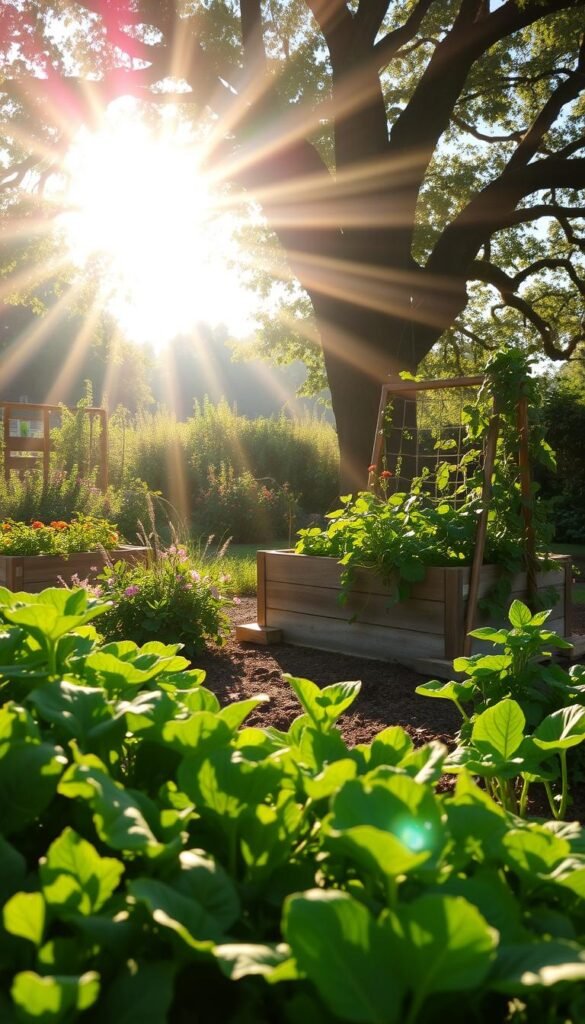
Your journey begins with understanding your space’s unique personality. Sunlight acts as nature’s choreographer, directing where each plant will thrive. Observe your area through the seasons – winter shadows differ from summer patterns in surprising ways.
Sunlight: The Ultimate Location Guide
Fruiting stars like tomatoes demand 6-8 hours of direct light daily. Leafy greens and herbs perform beautifully with just 4 hours. Track sun patterns using free apps or simple stick markers:
| Plant Type | Daily Sun Needs | Best Locations |
|---|---|---|
| Tomatoes/Peppers | 6-8 hours | South-facing walls |
| Lettuces/Spinach | 4 hours | Morning sun areas |
| Basil/Thyme | 4-6 hours | Patio containers |
Plant Partnerships That Shine
Pair scarlet runner beans with climbing roses for vertical drama. In shady corners, combine mint with coleus – their vibrant leaves create edible art. Choosing the right vegetable varieties becomes easier when you match plants to your light conditions.
Front yards often surprise gardeners with hidden potential. Try dwarf fruit trees surrounded by marigolds – they’ll give structure while attracting pollinators. For tricky spaces, our gardening checklist offers clever container solutions.
“A garden’s success isn’t measured in square feet, but in smart pairings that maximize every ray of light.”
Cottage Vegetable Garden: Growing Edibles in a Floral Wonderland – Design Principles
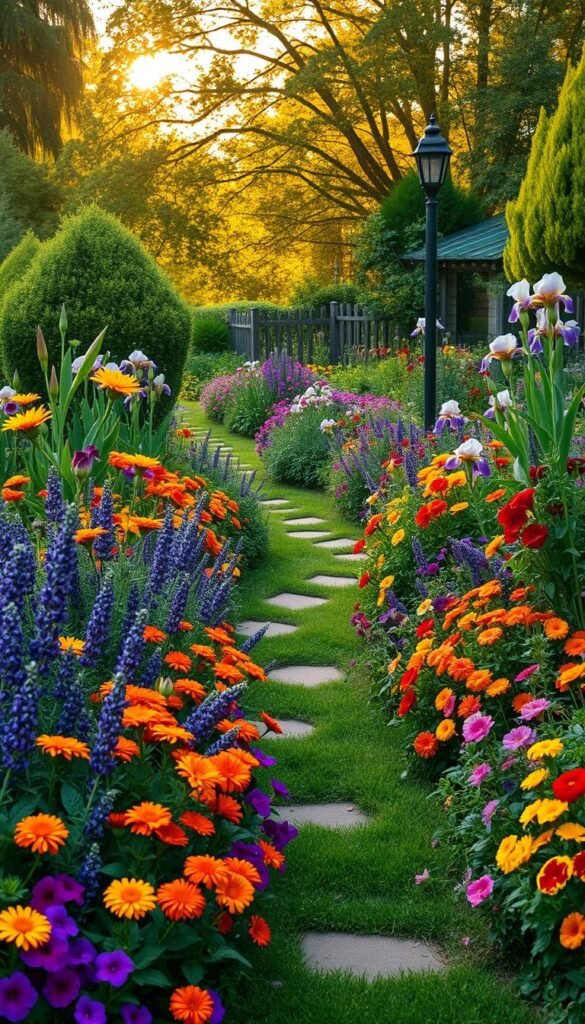
Crafting a living tapestry of blooms and harvests starts with smart plant partnerships. Annuals and perennials each play distinct roles in your design, offering flexibility and structure. Let’s explore how to balance these choices for maximum impact.
Annuals vs. Perennials: Timing Your Garden’s Rhythm
Annuals like zinnias and basil deliver instant gratification, transforming empty beds into lush displays within weeks. These fast-growing plants let you refresh your space each season – perfect for testing new color schemes or crop rotations.
| Plant Type | Lifespan | Benefits | Best Uses |
|---|---|---|---|
| Annuals | 1 season | Quick results, edible flowers | Seasonal color pops |
| Perennials | 3+ years | Low maintenance, structure | Border foundations |
Herb-Flower Fusion: Beauty Meets Practicality
Pair purple sage with pink cosmos for a fragrant border that deters pests. Silver thyme makes striking groundcover beneath sunflowers’ golden faces. This approach layers foliage textures while keeping kitchen essentials within reach.
Rosemary’s upright form complements trailing nasturtiums in containers – a space-smart addition for patios. For inspiration on balancing form and function, explore this cottage garden philosophy that celebrates edible aesthetics.
“My lavender hedge feeds pollinators by day and flavors desserts by night – that’s double-duty gardening at its finest.”
Incorporating Edibles and Ornamentals for a Lively Space
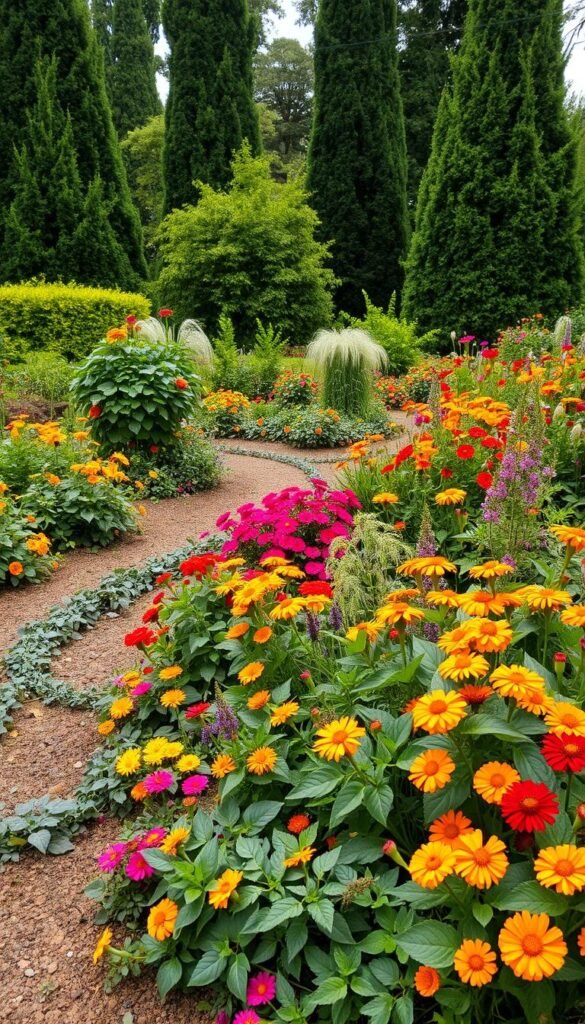
Transform your outdoor areas into dynamic displays where beauty meets bounty. Strategic planting blends quick-growing annuals with enduring perennials, creating layers of color and texture that evolve through the seasons.
Planting with Annuals: Fast Growth and Seasonal Charm
Brighten your beds with basil’s purple spikes dancing beside zinnia fireworks. These one-season wonders let you experiment freely – try stevia’s sweet leaves against strawflower’s papery blooms. You’ll enjoy:
- Continuous harvests from cilantro to chamomile
- Cutting gardens bursting with cosmos and snapdragons
- Natural pest control through marigold-nasturtium partnerships
| Plant Type | Growth Speed | Key Features | Best Pairings |
|---|---|---|---|
| Annuals | 6-8 weeks | Edible blooms, quick color | Borage + Pansies |
| Perennials | 2+ years | Winter structure | Sage + Roses |
Creating Lasting Beds with Perennials and Biennials
Establish permanent foundations with thyme’s fragrant carpet and rosemary’s upright forms. Medicinal plants like echinacea add therapeutic value while attracting pollinators. Remember:
- Space hollyhocks behind compact sage bushes
- Let lamb’s ear soften peony stems
- Use chive blossoms as edible garnishes
“My front walk features oregano spilling over daisies – guests can’t tell where the salad bar ends and the flower show begins!”
By mixing plant lifespans, you’ll enjoy fresh harvests while building a landscape that improves each year. Just match mature sizes during spring planting to prevent overcrowding.
Maximizing Space and Enhancing Curb Appeal
Your outdoor area becomes a visual feast when structure meets creativity. Clean-lined containers and tiered beds add architectural interest while optimizing growing real estate. Let’s explore how to make every inch work double-duty.
Elevate Your Layout
Raised cedar boxes give zucchini room to sprawl while framing your design. Try stacking strawberry pots near entryways – their cascading fruits welcome guests with edible charm. For tight spots, top vegetables for tight spots thrive in window boxes paired with trailing lobelia.
Blooms That Pull Their Weight
Calendula petals brighten salads while repelling aphids from your peppers. Plant chives beneath roses – their purple pom-poms deter blackspot fungus. This way, your flowers become pest patrol and garnish suppliers.
Seasonal Strategies
Swap summer basil for frost-tolerant pansies in autumn containers. Wrap evergreen rosemary in twinkling lights during winter – it’s festive and functional. A quick weekly check keeps pollinators visiting all year.
With these approaches, your home becomes a living postcard where practicality and beauty grow side by side. What will you harvest first – compliments or cucumbers?

